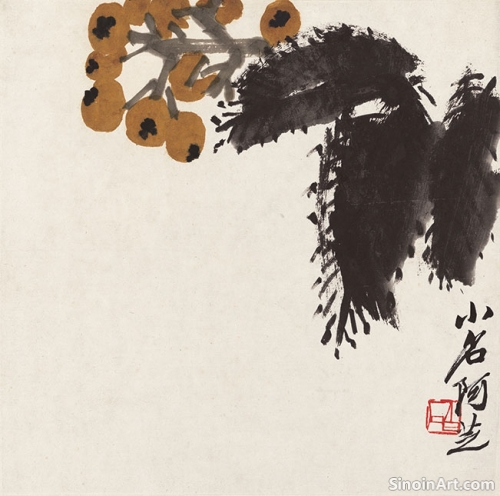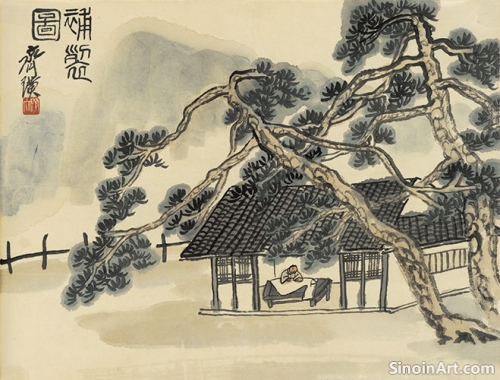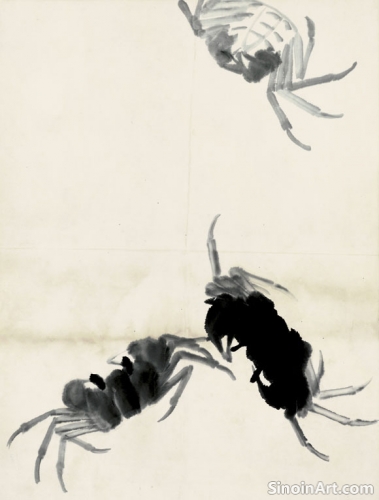The Influence of the Seal Script on Xieyi
|
The Seal Script, or zhuànshū (篆書), an ancient style of Chinese calligraphy, has had a notable influence on the aesthetic of Xieyi painting. The emphasis on balance, symmetry, and the flowing lines of Seal Script can be seen in the approach to composition, line quality, and overall design that many Xieyi artists employ. It is one of the oldest styles of Chinese calligraphy, and its influence can be found throughout the artistic tradition.  The flowing and curving lines of the zhuànshū often inspire the artist’s use of brushstrokes, creating an organic, natural feel in the lines and forms within the painting. It can give the lines an elegant and subtle beauty that is valued within Xieyi. The influence is more subtle, but it is still important to the overall aesthetic.  The emphasis on balance and symmetry in zhuànshū can be seen in the way Xieyi artists compose their paintings, creating harmonious arrangements of form and space. This careful sense of balance and spatial relationship informs the way the art is structured. The sense of equilibrium is a key element of both traditions.  The use of the zhuànshū in seals is also an important aspect of its influence on Xieyi painting, the artist’s seals adding depth and authenticity to the artwork. The seals are often works of art themselves, and are a vital part of the art process. They add depth and meaning to the artistic expression. The study of zhuànshū can deepen an artist’s understanding of brush control, ink application, and the expressive potential of line, helping the artist to develop their overall style and creative intent. It provides a solid technical foundation, while also deepening one’s understanding of the history of the tradition. |
Tag : Seal script, Chinese calligraphy, ancient script, art influence
Related information
- Modern Interpretations and Contemporary Xieyi
- Materials and Tools for Xieyi Painting
- Xieyi Painting and the Use of "Boneless Technique" ( Mògǔ)
- The Enduring Appeal of Xieyi Painting
- The Influence of Confucianism on Xieyi
Modern Xieyi painting is adapting to contemporary contexts through incorporating new techniques, subject matter, and philosophical ideas, while remaining grounded in the core principles of spontaneity, expression, and the pursuit of qi, and pushing its boundaries into the modern art world.
The four treasures of the study - brushes, ink, paper, and inkstone – are crucial tools for Xieyi painting. Each tool, from brush construction to paper absorbency, affects the ink application and contributes to the unique character of the artwork.
The "Boneless Technique" (mògǔ) in Xieyi relies on the absence of outlines, instead using washes of ink and color to create form and texture, resulting in fluid, organic works that require skill in blending and layering, as well as spatial awareness.
The enduring appeal of Xieyi painting stems from its emotional and intuitive power, achieved through personal expression, spontaneity, suggestive imagery, and the pursuit of essence, connecting with viewers across cultures, and inspiring contemplation, tradition, and a deep understanding of the human experience.
Confucianism subtly influences Xieyi painting through its emphasis on self-cultivation, social harmony, moral conduct, and the ideal of the gentleman scholar, shaping the cultural context, the values of the art form, and the ethical dimensions of artistic creation.